Self-Driving Cars Legal Issues: Who Is at Fault in a Self-Driving Car Accident?
The self-driving car is a dream of the future people have been chasing for decades. Who wouldn’t want to sit back, relax and leave the stresses of navigating traffic to their automobile?
In the 2010s, many companies claimed that autonomous vehicles would be driving down the streets by the 2020s. As that promise came and went, several issues arose with companies testing their autonomous cars, including fatal crashes.
These tragic events, mixed with a slower-than-expected evolution in technology, caused companies to backtrack on the idea of a fully autonomous fleet of vehicles by the early 2020s.
As autonomous vehicles enter the market, responsibility for crashes, injuries and lost wages become muddled. Self-driving cars pull the seam of human motor vehicle operation from the very fabric of auto injury law.
The shift in driving responsibility makes it difficult to understand who is at fault in a self-driving car accident.
Self-Driving Cars Liability: What Is an Autonomous Vehicle?
An autonomous vehicle is a motor vehicle that can operate without the input of a human driver. They use sensors and software to determine where the car is relative to the road, other vehicles, pedestrians and obstacles.
Self-Driving Car Legal Issues: Levels of Autonomy
The International Society of Auto Engineers created the levels of autonomy system to determine how capable a vehicle is of operating itself versus how much control the driver needs to exercise.
- Level 0: The driver controls all major systems. These cars may have some automated features, like cruise control and lane-departure warnings, but everything is under the driver’s control.
- Level 1: The car offers driver assistance with systems like adaptive cruise control or adaptive braking.
- Level 2: The vehicle controls both speed and steering simultaneously, but only under certain conditions. Adaptive cruise control and lane-centering can work together in a level 2 vehicle.
- Level 3: The vehicle controls speed and steering simultaneously while monitoring the surrounding area. The human driver needs to be present for operation, as the car will alert the driver when they need to take over.
- Level 4: These vehicles can handle most normal driving conditions.
- Level 5: Vehicles on level 5 are entirely autonomous and can operate in any condition.
What Are the Benefits of Autonomous Vehicles?
For some drivers, the thought of an autonomous future is terrifying. Giving up their ability to traverse the open road is a tragedy.
For many, driving is a chore that they would gladly hand over to an automated system to do other things while traveling.
Regardless of your opinion of autonomous vehicles, there is a level of convenience and safety that self-driving cars can reach that human-operated automobiles cannot. In the current sample size, autonomous cars have a significantly lower accident rate than human drivers. Ninety-four percent of serious crashes are due to human error. These types of collisions may have caused a serious injury to you.
While autonomous vehicles are theoretically safer, more efficient and more convenient for the average driver, problems with self-driving cars prevented the meteoric rise predicted by automobile manufacturers.
Self-driving automobiles have been responsible for injuries and deaths of passengers and civilians during the last decade. Some blame these accidents on human error, while others blame the vehicle’s manufacturer.
Regardless, the injured party needs to be made whole on account of their damages. A need for compensation leads to the question, is the vehicle’s driver or the manufacturer responsible for an autonomous vehicle crash?
Self-Driving Car Legal Issues: A Case of Negligence Against the Driver/Owner
Owner negligence of an autonomous vehicle can still cause an accident, especially at lower levels of autonomy. It’s difficult to predict what kind of laws states will develop issues will be decided on, but a few examples of owner negligence could include:
- The car owner knew about a mechanical, electrical or software problem with the car and didn’t fix it.
- The driver didn’t show supervision whenever they were driving an automobile with a lower level of autonomy.
- The driver neglects the car’s signals for the driver to take control of the vehicle.
Self-Driving Car Legal Issues: A Case of Negligence Against the Manufacturer
Product liability is nothing new to the automobile industry, as millions of cars are recalled every year due to defects. Many of these companies are held responsible through a class-action lawsuit or mass tort case.
Self-driving cars pose more product liability concerns as they remove driver negligence from the equation, which turns responsibility for accidents to the manufacturers of these vehicles.
Due to the complex systems in self-driving cars, like radars, sensors, onboard cameras, lidar, and specialized software, several parts could malfunction. If one piece of a self-driving car’s system fails, it could result in a car crash.
The car’s level of autonomy and self-driving capabilities should be on full display for the driver to understand. They need to know the amount of responsibility they carry before operating the vehicle.
Auto Injury Law: Get Expert Advice
While the promise of self-driving vehicles has backed off from original claims, there will most likely be a day when they are the primary form of transportation. It’s critical to have expert injury law advice to face the changing landscape of automobile accidents.
If you are injured in an accident due to another driver’s negligence, don’t face the burden of your injury alone. Contact Tolbert Beadle today to see how we can help you get back on the road to recovery.





